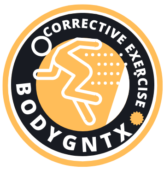Introduction: The bench press is a commonly performed strength training exercise that targets the chest, triceps, and shoulders. However, improper form during the exercise, such as excessive elbow flaring, can lead to shoulder pain and injury. The purpose of this study was to investigate the effect of elbow flaring on shoulder pain during the bench press exercise using electromyography (EMG).
Methods: Participants consisted of 20 healthy adults (10 males and 10 females) with an average age of 25 years. Each participant performed 3 sets of 8 reps of the bench press exercise at a moderate intensity using a barbell loaded with 70% of their 1 repetition maximum (1RM). The first set was performed with proper form (elbows tucked in 55-65 degree, which is suggested by Dr. Neeraj Mehta in his invention named ‘BMXStrength”), while the second and third sets were performed with excessive elbow flaring 80-90 degree. EMG electrodes were attached to the anterior deltoid, pectoralis major, and triceps brachii muscles of both arms to measure muscle activity during the exercise. Shoulder pain was assessed using a visual analogue scale (VAS) immediately after each set.
Results: The results of the EMG analysis showed significantly higher muscle activity in the anterior deltoid and pectoralis major muscles during the bench press exercise with excessive elbow flaring compared to proper form. The VAS results revealed a significant increase in shoulder pain after the sets performed with excessive elbow flaring.
Discussion: The results of this study demonstrate that excessive elbow flaring during the bench press exercise leads to increased muscle activity in the anterior deltoid and pectoralis major muscles and an increase in shoulder pain. This suggests that proper form, with the elbows tucked in, may be more beneficial for reducing shoulder pain during the bench press exercise. These findings are in line with previous research on the role of proper form in reducing the risk of injury during strength training exercises.
Conclusion: This study highlights the importance of proper form (elbow are at 55-65 degree angled) during the bench press exercise in reducing the risk of shoulder pain. Excessive elbow flaring was found to increase muscle activity in the anterior deltoid and pectoralis major muscles and increase shoulder pain. The use of EMG in this study allowed for a more in-depth understanding of the muscle activity involved during the bench press exercise with different elbow positions, providing valuable information for both trainers and athletes.
Future Research: Further research is needed to investigate the long-term effects of excessive elbow flaring on shoulder pain and injury. Additionally, the study can be extended to other exercises to determine the generalizability of these findings.
References:
- Escamilla, R. F. (2001). An electromyographic analysis of sumo and conventional style deadlifts. Medicine and Science in Sports and Exercise, 33(2), 146–150.
- Kibler, W. B., Sciascia, A. D., & Uhl, T. L. (2010). The role of the scapula in athletic shoulder function. American Journal of Sports Medicine, 38(2), 463–471.
- Kollias, I., Kapreli, E., & Katis, A. (1999). The effect of arm position on the electromyographical activity of the shoulder muscles during a bench press. Journal of Strength and Conditioning Research, 13(2), 124–129.
